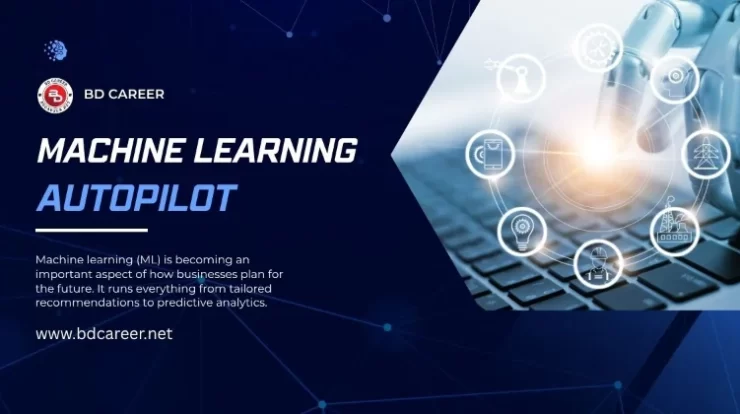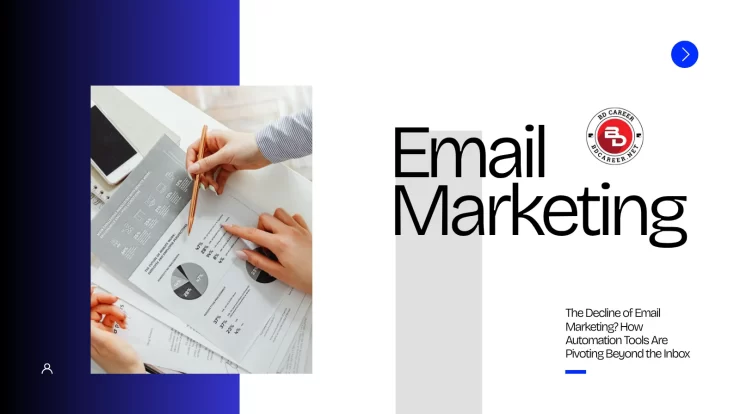
Machine learning (ML) is becoming an important aspect of how businesses plan for the future. It runs everything from tailored recommendations to predictive analytics. But it normally takes a lot of time, money, and knowledge to create, train, and use ML models. Automated Machine Learning (AutoML) is changing the game by making advanced machine learning available, efficient, and scalable for enterprises of all sizes. This article talks about how AutoML and other related technologies are doing the hard work in machine learning processes, speeding up new ideas and making AI more accessible to everyone.
Contents
- What Is AutoML?
- Understanding AutoML: The Future of Machine Learning
- Key Benefits of AutoML
- Popular AutoML Tools and Platforms
- Automating Model Training with MLOps
- Simplifying Model Deployment: Tools That Make It Effortless
- Business Impact of AutoML and Automated Deployment
- Real-World Use Cases
- The Future of AutoML
- Conclusion
What Is AutoML?
Automated Machine Learning, or AutoML, refers to the process of automating the end-to-end workflow of applying machine learning to real-world problems. Traditionally, building a high-performing model involves multiple complex steps, including:
- Cleaning and preprocessing data
- Selecting features
- Choosing the right model
- Tuning hyperparameters
- Evaluating results
- Deploying the model into production
AutoML tools streamline or fully automate these tasks using advanced algorithms, often powered by meta-learning, neural architecture search (NAS), and ensemble methods. The result: reduced development time, minimal human error, and improved model performance even for those without deep ML expertise.

Understanding AutoML: The Future of Machine Learning
AutoML is the process of making the full process of applying machine learning to solve problems in the real world automatic. This includes preprocessing data, creating features, picking a model, changing hyperparameters, and deploying the model. All of these tasks used to require specialist knowledge and manual work. AutoML platforms use advanced approaches like transfer learning and neural architecture search to improve how models are built. Neural architecture search designs neural networks automatically. Transfer learning, on the other hand, adapts models that have previously been trained to new tasks, which makes the learning process go much faster. Most AutoML systems feature interfaces that are easy to use and let anyone build, train, and deploy models with minimum coding, even if they don’t know anything about machine learning.
Key Benefits of AutoML
- Efficiency: AutoML streamlines the ML workflow, automating repetitive tasks and reducing the time required to develop robust models.
- Accessibility: By lowering technical barriers, AutoML democratizes AI, enabling business analysts and domain experts to participate in AI projects.
- Scalability: Automated processes make it feasible to deploy and manage models across large datasets and complex applications.
- Accuracy: Systematic optimisation of models and parameters frequently leads to better predictions.
- Cost Savings: Automation cuts down on the need for a lot of manual work and specialised workers, which makes advanced ML solutions more affordable for many businesses.
Popular AutoML Tools and Platforms
There are a number of robust AutoML platforms available today that may be used by people with varied degrees of experience and deployment needs. Here are some of the most common solutions:
Google Cloud AutoML
Google’s AutoML package works perfectly with its cloud services and lets you make your own models using an easy-to-use interface. It can recognise images, parse language, and analyse structured data, so users can train models with very little scripting.
Amazon SageMaker Autopilot
SageMaker Autopilot is a part of AWS’s strong machine learning ecosystem. It automatically tests many models and chooses the optimal one based on performance criteria. It is a favourite among business customers because it works well with other AWS technologies to make deployment pipelines go smoothly.
Microsoft Azure AutoML
Azure’s AutoML is for both business users and data scientists. It has a drag-and-drop UI and a Python SDK that work together to make model training easy to grasp and provide a lot of interpretability features that assist users in understanding why the model acts the way it does.
H2O.ai Driverless AI
H2O’s Driverless AI is a leader in explainable AI (XAI). It has strong time-series forecasting, autonomous feature engineering, and support for GPUs. It works well in fields like banking and healthcare, where compliance and model interpretability are important.
Auto-sklearn and TPOT (Open Source)
Researchers and developers can use Auto-sklearn and TPOT, which are open-source tools based on the well-known Scikit-learn framework. TPOT employs genetic algorithms to make pipelines better, and Auto-sklearn uses Bayesian optimisation to discover the optimal models.
These platforms give businesses the tools they need to automate forecasts, improve marketing campaigns, find unusual events, and improve fraud detection, often without the need for separate data science teams.

Automating Model Training with MLOps
AutoML does a lot of the work of constructing models, but MLOps (Machine Learning Operations) goes much farther by taking care of the whole lifecycle of ML models in production. MLOps pipelines automatically train, retrain, validate, and deploy models when new data comes in or business needs change.
Automation in MLOps brings several advantages:
- Repeatability: Repeatability: Automated pipelines make sure that the steps for training and deployment are always the same and can be repeated.
- Efficiency: Routine tasks such as monitoring, analysis, and problem detection are handled automatically, freeing up human experts for more complex challenges.
- Performance Monitoring: Continuous monitoring allows for early detection of model drift or degradation, prompting retraining as needed.
- Transparency and Compliance: Many modern tools offer explainable AI features, which are crucial for regulated industries like healthcare and finance.
However, automation is not a complete substitute for human expertise. Data scientists and domain experts are still needed to interpret results, address edge cases, and guide strategic decisions.
Simplifying Model Deployment: Tools That Make It Effortless
Deploying machine learning models into real-world environments is often cited as one of the most challenging aspects of the ML workflow. AutoML and MLOps tools now make this process significantly easier.
- TensorFlow Serving: Offers flexible, high-performance serving of ML models with support for dynamic updates.
- AWS SageMaker: Automates endpoint creation and scaling for real-time predictions, simplifying integration with business applications.
- Kubeflow: Provides a Kubernetes-based platform for scalable and reproducible ML deployments.
- MLflow: An open-source tool for experiment tracking, model packaging, and deployment with a robust model registry.
These deployment tools ensure that models can be quickly moved from development to production, supporting real-time decision-making and continuous learning.
Business Impact of AutoML and Automated Deployment
The adoption of AutoML and automated deployment tools is transforming how businesses approach AI. By lowering technical barriers and reducing reliance on specialised talent, organisations can:
- Accelerate time-to-insight: Rapid model development and deployment mean faster responses to market changes and customer needs.
- Enhance decision-making: Automated analytics and predictive models support more informed, data-driven strategies.
- Scale AI initiatives: Automation enables businesses to manage and deploy multiple models across different departments or use cases without overwhelming resources.
- Drive innovation: Freed from routine tasks, data scientists can focus on exploring new algorithms, refining models, and solving complex business challenges.

Real-World Use Cases
AutoML is already making a tangible impact across industries:
- In healthcare, automating medical image analysis, patient risk assessments, and diagnoses. •
- Finance: Making it easier to find fraud, score credit, and manage risk.
- Retail and Marketing: Making personalised recommendations, predicting demand, and dividing customers into groups is possible.
- Manufacturing: Using anomaly detection to make predictive maintenance and quality control possible.
The Future of AutoML
The AutoML field is changing quickly. There are a number of fascinating trends that are pushing its limits:
- Self-supervised learning: Models can learn structure from raw inputs instead of having to rely on labelled data.
- Federated AutoML: This lets you use AutoML on edge devices without putting your data at risk. It’s great for mobile and IoT apps.
- Model governance integration: Adding bias detection, fairness audits, and accountability metrics right into AutoML workflows.
- Human-in-the-loop systems: These systems use both human knowledge and AutoML speed to make models more accurate, especially in high-risk areas.
The long-term goal of AutoML is to have machines develop and improve other machines with very little help from people. We’re not quite there yet, but every improvement in AutoML brings us closer to that self-reinforcing loop of automatic intelligence.
Conclusion
A new era of machine learning is beginning with machine learning autopilot and automated deployment tools. Now, you don’t need a team of PhDs or months of work to design, train, and deploy models. These tools make AI more accessible, speed up innovation, and provide businesses with the power to use machine learning on a large scale. As AutoML platforms get better, companies that use these tools will be in the greatest position to get the most out of their data and stay ahead of the competition in a world that changes quickly.





